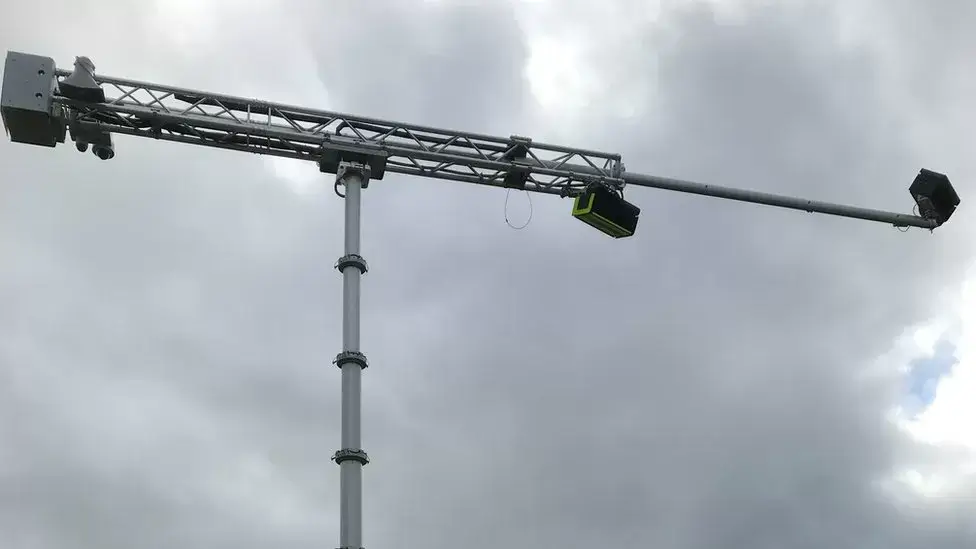An innovative artificial intelligence (AI) camera system has made its debut on the roads of the United Kingdom, revealing its powerful capabilities by capturing nearly 300 instances of law-breaking behavior within the initial three days of operation. This cutting-edge system, stationed along the A30 near Launceston in Cornwall, has brought to light the prevailing issues of motorists disregarding road safety regulations, either by utilizing mobile phones while driving or neglecting to fasten their seatbelts.
This independent AI-driven road safety camera, a remarkable creation in modern technology, employs its advanced algorithms to identify potential violations. It’s important to note that, despite the AI’s role in initial detection, a human review process is still integral to the enforcement process, as clarified by the Devon and Cornwall Police. This collaborative approach ensures that each image is thoroughly examined to ascertain the presence of an offense.
The mechanism of this AI camera is truly remarkable. It involves an array of cameras equipped with high-speed shutter capabilities, an infrared flash mechanism, and a sophisticated lensing and filtering setup. This configuration enables the capture of crystal-clear images of passing vehicles, even under challenging conditions.
Upon capturing these images, the AI software takes center stage, meticulously analyzing each frame to identify potential violations. If an image is flagged as likely containing evidence of a transgression, it is then anonymized and referred to a human reviewer for final confirmation. This dual-step process guarantees the accuracy of the findings, minimizing the potential for false accusations.
In its trial phase, this novel system has unveiled some startling statistics. The AI camera system’s inaugural 72 hours on the A30 yielded a remarkable record: 117 instances of mobile phone usage violations and an equally concerning 180 instances of drivers neglecting to wear their seatbelts. These numbers not only emphasize the urgency of addressing these behaviors but also underscore the AI’s capability to swiftly and accurately identify such violations.
Interestingly, this is not the first time the region has embraced AI-driven road safety technology. In 2022, Vision Zero South West embarked on a 15-day trial featuring a larger vehicle-based system developed by road safety technology firm Acusensus. This trial recorded 590 seatbelt violations and 45 mobile phone violations across various roads in Devon and Cornwall. These figures serve as a testament to the persistent challenges faced by road safety enforcement agencies in curbing reckless behavior.
Considering the broader safety landscape, the adoption of this AI camera system seems imperative. In the previous year alone, the region reported a staggering 48 road fatalities and a further 738 cases of serious injuries stemming from road accidents. Adrian Leisk, the head of road safety for the Devon and Cornwall Police, succinctly encapsulated the essence of this technological advancement: a decisive move towards confronting the critical issue of driver distraction.
Leisk affirmed, “When we trialed this technology last year, we were disappointed by the number of drivers detected not wearing seatbelts. The early results from our latest deployment show that there is also a problem with mobile phone use behind the wheel, which is both dangerous and illegal.” With a resolute determination to make roads safer, he emphasized the significance of this new AI-driven approach in transmitting a clear message to all motorists who continue to engage in reckless behavior while driving—a stern reminder that such actions will no longer go unnoticed.
In essence, this AI camera system’s early triumphs hold a promising future for road safety enforcement. By harnessing the capabilities of artificial intelligence alongside human oversight, a new era of vigilance on the road has dawned. The amalgamation of cutting-edge technology and dedicated human vigilance stands poised to usher in a safer, more responsible era of driving behavior on the roads of the UK.





